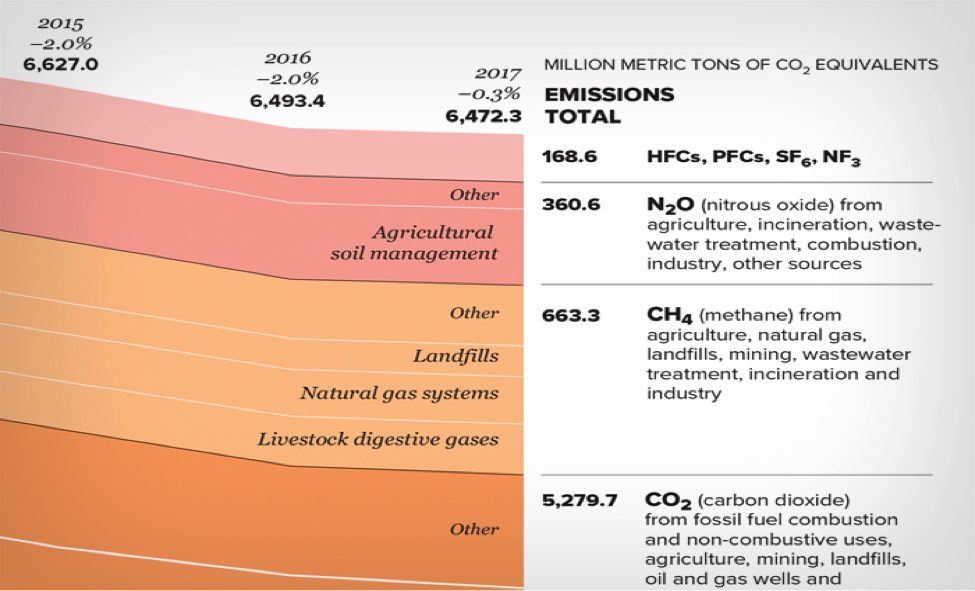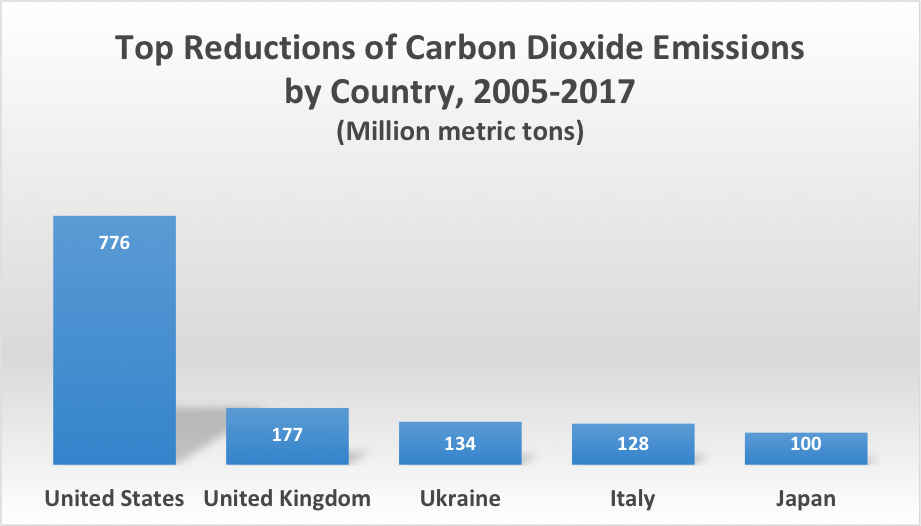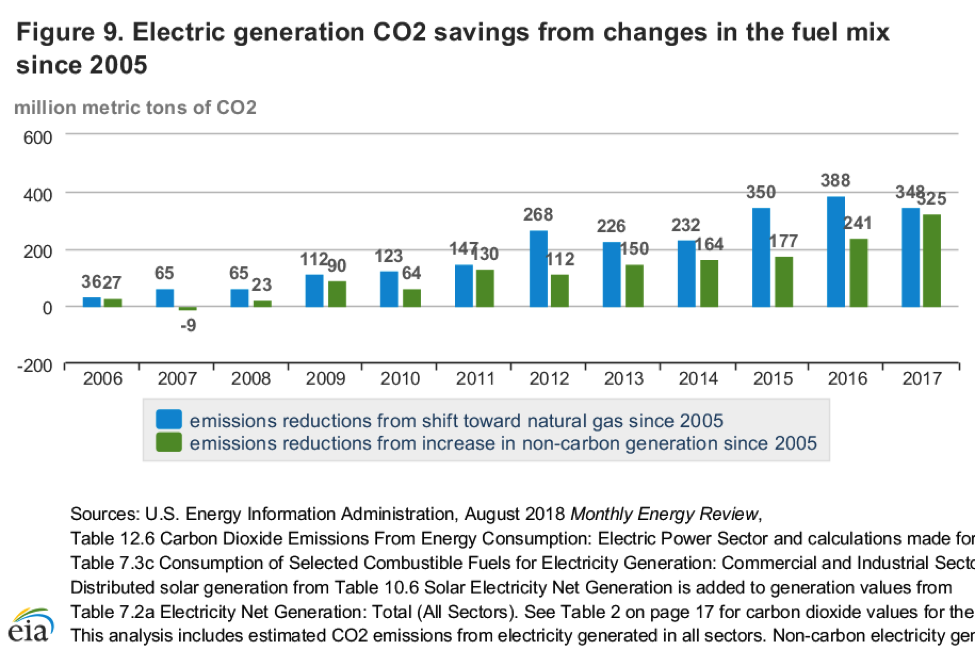The U.S. Environmental Protection Agency recently released its draft report on the Inventory of U.S. Greenhouse Gas Emissions and Sinks, 1990-2017, indicating that net U.S. greenhouse gas emissions declined between 2005 and 2017 by 14 percent. Greenhouse gases are made up of carbon dioxide, nitrous oxide, methane, and several other fluorine-containing halogenated substances. (See graph below.) Only a handful of economies can make this reduction boast, as most have increased their greenhouse gas emissions despite programs and policies in many economies to reduce them. The United States accomplished this not by heavy regulation and mandates, but mainly by using hydraulic fracturing and horizontal drilling technology that lowered the price of natural gas, making natural gas combined cycle the technology of choice in the generating sector.

Carbon Dioxide Emissions
The United States leads the world in energy-related carbon dioxide emission reductions since 2005, declining by 776 million metric tons (14 percent) between 2005 and 2017. (See graph below.) During this period, the U.S. economy grew by 20 percent, U.S. energy consumption fell by 2 percent and per capita emissions dropped to their lowest levels since 1950. Compared with the levels in 2005, U.S. economic growth in 2017 was 29 percent less carbon-intensive, and overall U.S. energy consumption was 12 percent less carbon-intensive.

The Energy Information Administration (EIA) in its annual report on energy-related carbon dioxide emissions in the United States confirms that the ongoing shift to using natural gas in place of higher-emitting forms of energy is the primary reason for the United States’ success in reductions of energy-related carbon dioxide emissions. The natural gas share of electricity production increased from 19 percent in 2005 to 32 percent in 2017, surpassing coal-fired electricity production, while carbon dioxide emissions in the U.S. generating sector declined by 28 percent over this period. The shift toward natural gas from coal lowers carbon dioxide emissions because natural gas produces fewer emissions per unit of energy consumed than coal and because natural gas generators typically use less energy than coal plants to generate each kilowatt-hour of electricity.
According to EIA, natural gas can be credited for 61 percent of the total 3.86 billion metric tons of carbon dioxide reductions from electric generation since 2005 and non-carbon sources can be credited with the remainder of the reductions. (See chart below.) Electricity demand fell slightly over this period (by just 0.05 percent). Unaddressed, but no doubt playing a part, was a shift of U.S. manufacturing and industrial processes to other parts of the world that began prior to the period referenced by the EIA.

Natural Gas and Oil Production
The trend in natural gas generation coincided with the domestic boom in natural gas production, made possible by hydraulic fracturing and directional drilling technology, making natural gas trapped in shale basins accessible. U.S. natural gas production increased by 54 percent from 2005 to 2017 from 19 trillion cubic feet in 2005 to 29 trillion cubic feet in 2017, making the fuel even more abundant and affordable.
Along with the increase in natural gas production, U.S. oil production also increased between 2005 and 2017—by 80 percent due to hydraulic fracturing and horizontal drilling technology, increasing from 5.2 to 9.4 million barrels per day.
Despite these large increases in oil and natural gas production, total U.S. carbon dioxide emissions decreased by 14 percent and methane emissions declined by 4 percent between 2005 and 2017, according to the draft EPA report. These reductions are remarkable since energy production is particularly energy intensive.
Conclusion
The United States is ahead of all countries in reducing energy-related carbon dioxide emissions, reducing them by 14 percent from 2005 levels in 2017. This reduction occurred despite a 20 percent increase in the U.S. economy and a massive historic increase in oil and gas production. The ability to reduce energy-related carbon dioxide emissions is mostly attributed to the increase in natural gas generation displacing coal-fired generation, which occurred primarily due to low natural gas prices resulting from the use of hydraulic fracturing and directional drilling technology in shale basins. The United States is leading the major industrial countries of the world in economic growth, reductions in carbon dioxide emissions and oil and gas production. The administration and the American people should take pride in this phenomenal record.



